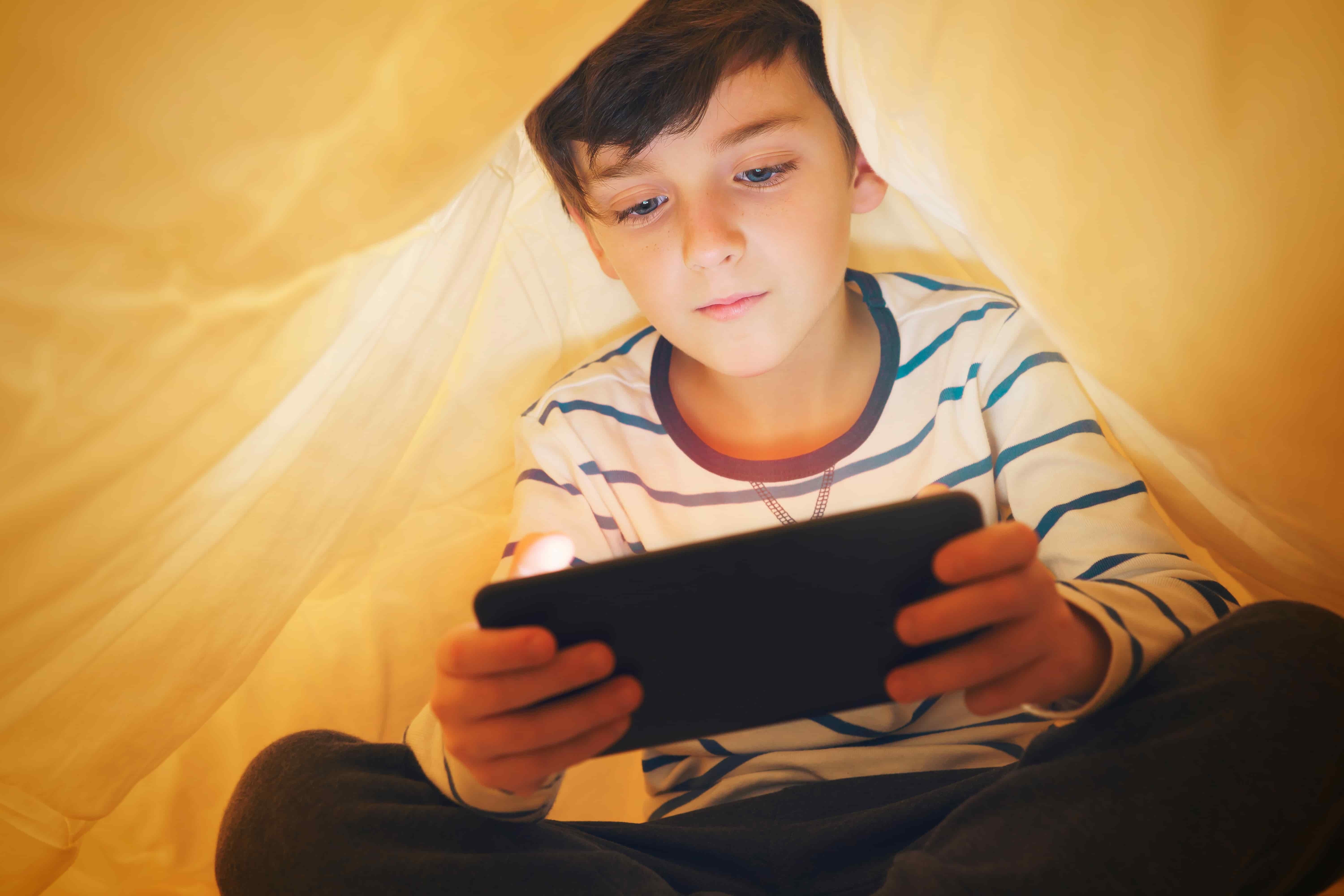
Technology plays an integral role in the way our world functions; we have TV’s to alert us of the news, phones to harness connections with family members and friends, gaming devices for entertainment, and laptops for education or work. However, over-stimulation and constant screen exposure can cause more harm than good, impacting development and eye health. Your family or household can have a healthy relationship with technology, but we must be aware of blue light exposure.
What is blue light?
Blue light is artificial high-energy light that lights up our television screens, smart devices, phones and laptops. Children are susceptible to blue light as they have large pupils and pure crystal lenses.1 While natural blue light plays a part in healthy eye development, and our natural sleep-wake cycle – or circadian rhythm – the level of blue light exposure that we experience from screens nowadays is unprecedented.2
How does blue light affect your vision?
Eye Strain
Over-stimulation and blue light exposure can cause eye strain in kids. Some symptoms to look out for include fatigued eyes, irritated eyes, pain in the neck, poor behaviour and reduced concentration. A recent study assessed that children who played video games were more likely to experience headaches, eyelid tics, transient diplopia (seeing double), dizziness, and have more refractive errors.7
Sleep
Blue light can disrupt the sleep-wake cycle, suppressing the production of melatonin and keeping children awake.4 Screen time is adversely associated with sleep outcomes in 90% of studies.4
What can we do?
Screen Time
Limiting screen time may seem like an impossible task, but the benefits are worth it.4 Limiting screen time can encourage outdoor play and in-person conversions. While we hear about restricting electronics at nighttime, overexposure during the day can also cause an impact on sleep and eye health.5
Night-time mode
If you do choose to allow electronics at night, ensure you use a warmer light setting, or nighttime mode, to limit blue light exposure.
Going screen-free
Try to have screen-free areas, such as the bedroom or the car. While this can seem like a tough rule initially, it’s essential for kids to understand that electronics have their place but shouldn’t be in every place.
20:20:20 rule
When exposed to blue light in the day, follow the 20:20:20 rule. After 20 minutes of screen-time, look outside for at least 20 seconds to give your eyes a break, and then return to 20 minutes of screen time. You may wish to set a timer to help you keep to this rule.
Supporting Eye Health
As part of our kids’ range, we are thrilled to launch the new Swisse Kids Eye Health formula, with nutrients such as lutein, bilberry and Omega-3 essential fatty acids to help support the development of healthy eyes.
- Lutein is a yellow carotenoid that acts as a filter for blue light in the eye. You can also find this ingredient in your favourite yellow and orange fruit and vegetables, such as pumpkin, rockmelon, mango, carrot and capsicum, as well as dark leafy greens.8
- Beta-carotene, a type of Vitamin A, is an antioxidant included in this mix. Beta-carotene is important in eye health, as it helps to support healthy eyesight and vision. Bilberry offers another rich source of antioxidants.
- Omega-3 essential fatty acids support healthy visual development.9 EPA and DHA are two types of Omega-3 fatty acids present in the eye.9 Omega-3 is abundant in oily fish such as salmon, mackerel and herring.
With 60% of Australian parents saying too much screen time is a significant health concern for their kids and teenagers, it’s essential to support healthy eye development through a nutritious diet, specific supportive nutrient packed foods and screen-time boundaries.
This medicine may not be right for you. Read the label before purchase. Follow the directions for use. Supplements may only be of assistance if dietary intake is inadequate.
References:
- Shigekazu Higuchi, Yuki Nagafuchi, Sang-il Lee, Tetsuo Harada, Influence of Light at Night on Melatonin Suppression in Children, The Journal of Clinical Endocrinology & Metabolism, Volume 99, Issue 9, 1 September 2014, Pages 3298–3303, https://doi.org/10.1210/jc.2014-1629
- Turner, P., Mainster, M., A. (2008). Circadian photoreception: ageing and the eye’s important role in systemic health. The British Journal of Opthamology, 92(11), 1439-1444. 10.1136/bjo.2008.141747
- Crowley, S. J., Cain, S. W., Burns, A. C., Acebo, C., & Carskadon, M. A. (2015). Increased Sensitivity of the Circadian System to Light in Early/Mid-Puberty. The Journal of clinical endocrinology and metabolism, 100(11), 4067–4073. https://doi.org/10.1210/jc.2015-2775
- Hale, L., & Guan, S. (2015). Screen time and sleep among school-aged children and adolescents: a systematic literature review. Sleep medicine reviews, 21, 50–58. https://doi.org/10.1016/j.smrv.2014.07.007
- Hysing, M., Pallesen, S., Stormark, K. M., Jakobsen, R., Lundervold, A. J., & Sivertsen, B. (2015). Sleep and use of electronic devices in adolescence: results from a large population-based study. BMJ open, 5(1), e006748. https://doi.org/10.1136/bmjopen-2014-006748
- Tamana, S. K., Ezeugwu, V., Chikuma, J., Lefebvre, D. L., Azad, M. B., Moraes, T. J., Subbarao, P., Becker, A. B., Turvey, S. E., Sears, M. R., Dick, B. D., Carson, V., Rasmussen, C., CHILD study Investigators, Pei, J., & Mandhane, P. J. (2019). Screen-time is associated with inattention problems in preschoolers: Results from the CHILD birth cohort study. PloS one, 14(4), e0213995. https://doi.org/10.1371/journal.pone.0213995
- Rechichi, C., De Mojà, G., & Aragona, P. (2017). Video Game Vision Syndrome: A New Clinical Picture in Children?. Journal of pediatric ophthalmology and strabismus, 54(6), 346–355. https://doi.org/10.3928/01913913-20170510-01
- Abdel-Aal, E.-S., Akhtar, H., Zaheer, K., & Ali, R. (2013). Dietary Sources of Lutein and Zeaxanthin Carotenoids and Their Role in Eye Health. Nutrients, 5(4), 1169–1185. doi:10.3390/nu5041169
- Swanson, D., Block, R., & Mousa, S. A. (2012). Omega-3 fatty acids EPA and DHA: health benefits throughout life. Advances in nutrition (Bethesda, Md.), 3(1), 1–7. https://doi.org/10.3945/an.111.000893
